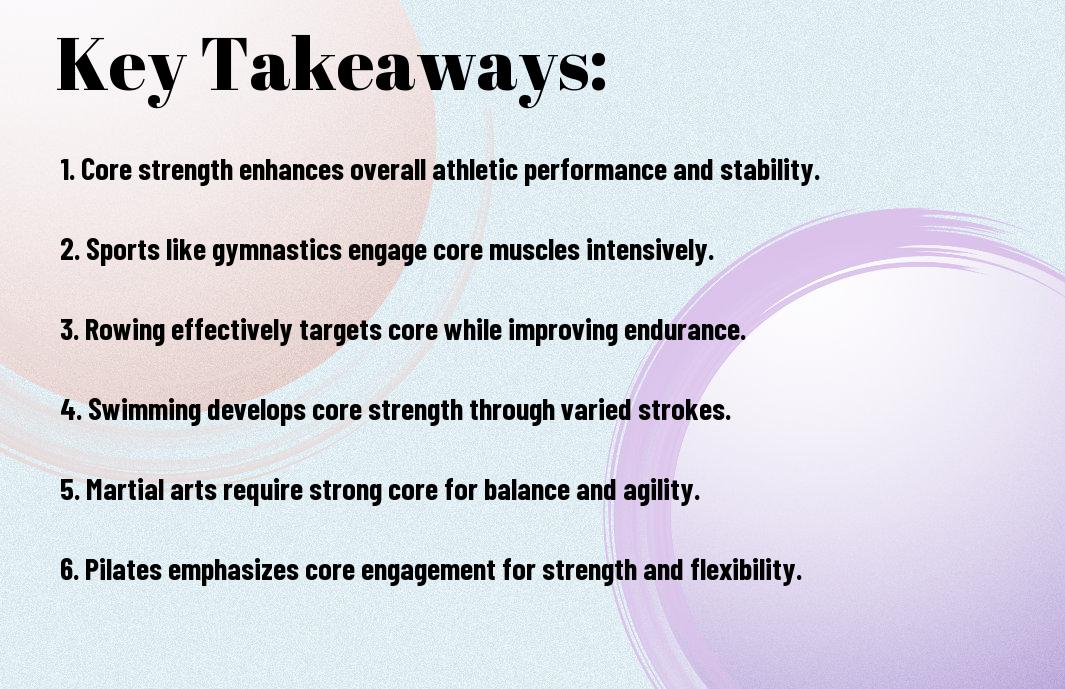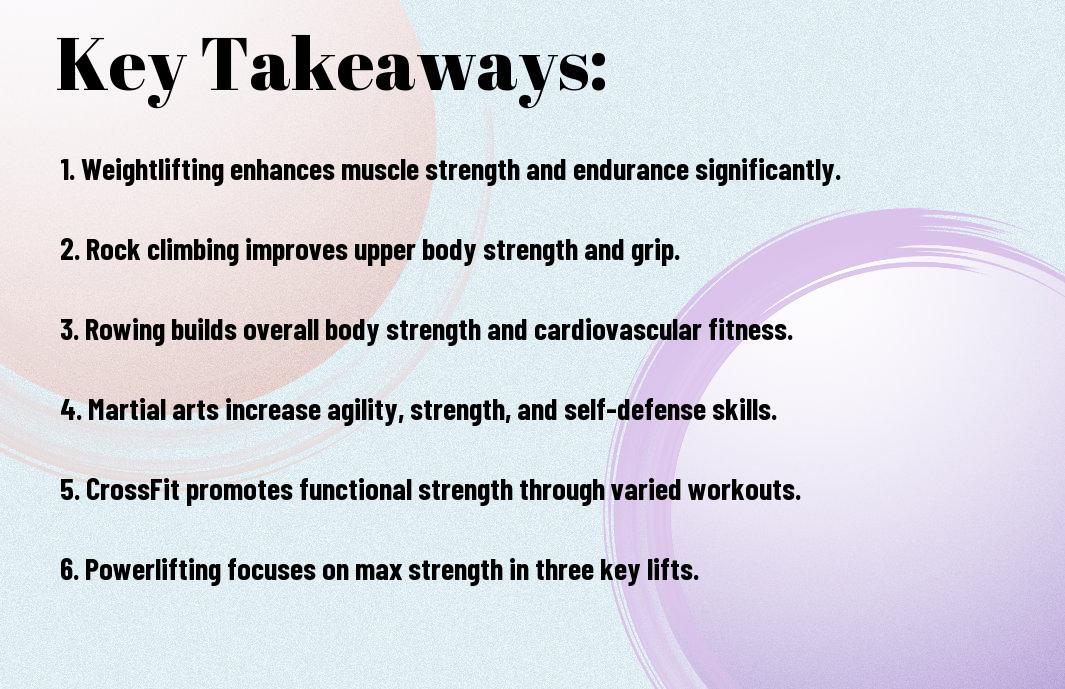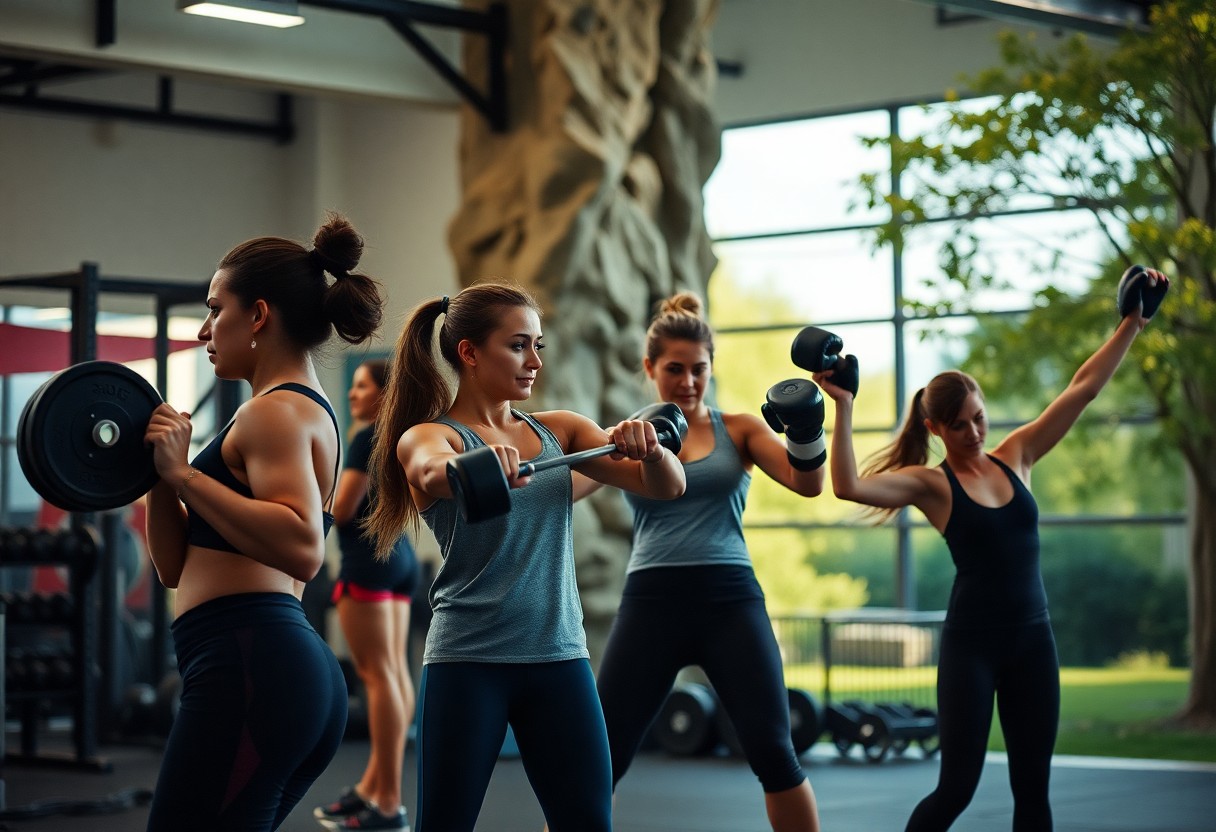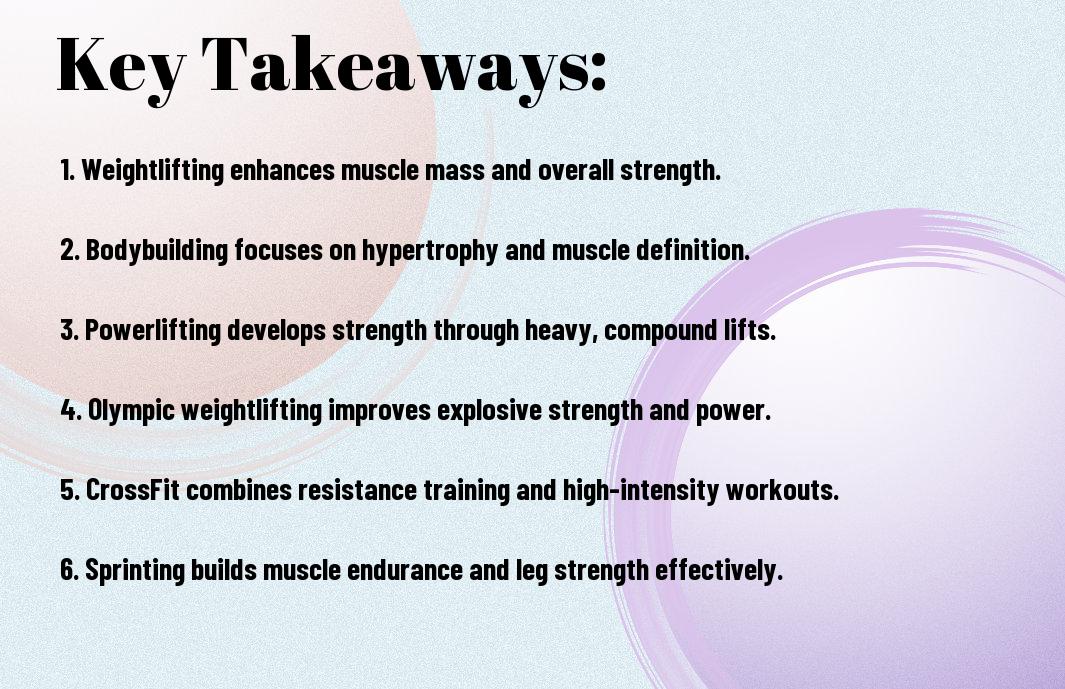Many athletes are always on the lookout for ways to enhance their performance, and strength training is a powerful tool in your arsenal. By incorporating targeted exercises into your routine, you can build muscle, improve endurance, and boost overall athletic performance. This blog post will guide you through some of the best strength training exercises specifically designed for athletes, helping you to optimize your workout regimen and achieve your fitness goals efficiently.
Key Takeaways:
- Compound Movements: Focus on exercises that engage multiple muscle groups, such as squats, deadlifts, and bench presses, to enhance overall strength and power.
- Sport-Specific Training: Incorporate exercises that mimic the movements and demands of your specific sport to improve performance and reduce injury risk.
- Progressive Overload: Gradually increase resistance or intensity in your training to continually challenge your muscles and promote growth.
- Core Stability: Prioritize core-strengthening exercises, like planks and rotational movements, to enhance balance and stabilize the body during athletic performance.
- Proper Technique: Always prioritize correct form and technique to maximize effectiveness of the exercises and minimize the risk of injury.
Importance of Strength Training for Athletes
While strength training forms the foundation of athletic performance, it is crucial for developing power, speed, and endurance. By incorporating a structured strength training program into your routine, you can enhance your overall performance on the field or in the gym. This not only helps you excel in your sport but also allows you to train more effectively and recover faster from workouts.
Enhancing Performance
After committing to a consistent strength training regimen, you will likely experience improved muscle function and metabolic efficiency. These enhancements lead to greater overall athleticism, enabling you to perform at higher intensities and sustain your peak performance longer during competitions.
Reducing Injury Risk
Among your many goals as an athlete, reducing the risk of injury should always be a top priority. A well-designed strength training program helps stabilize your joints, strengthens the muscles around them, and improves your body mechanics, thereby minimizing the likelihood of overuse and acute injuries.
In fact, by focusing on specific strength training exercises, you can target weaknesses and imbalances that often lead to injuries. This proactive approach not only enhances your physical resilience but also allows for a more sustainable athletic career. As you strengthen your body, you’ll find that you can push your limits while staying healthy, which is crucial for long-term success in your sport.
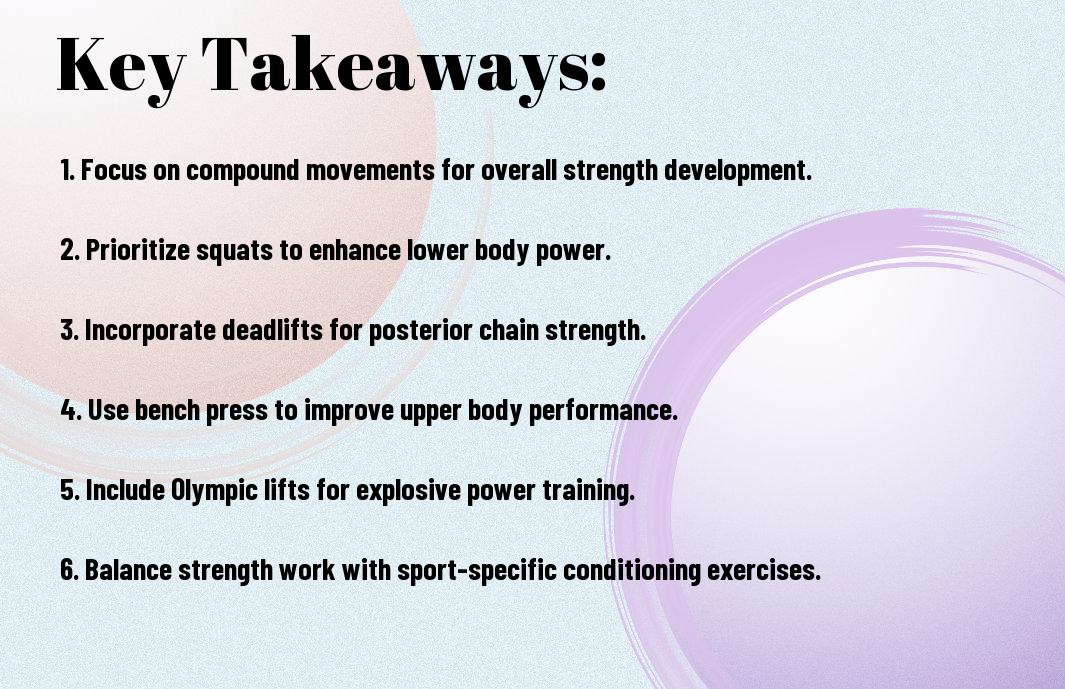
Key Strength Training Exercises
The best strength training exercises for athletes focus on building functional strength, power, and overall athletic performance. These exercises enhance your ability to perform in your sport while reducing the risk of injury. A well-rounded strength training program that includes various key exercises can significantly benefit your training regimen.
Compound Movements
Between squats, deadlifts, and bench presses, compound movements engage multiple muscle groups simultaneously, offering a comprehensive workout that promotes strength and stability. These exercises not only help you develop functional strength but also improve your overall coordination and balance, necessary attributes for any athlete.
Olympic Lifts
Training Olympic lifts like the clean and jerk and the snatch can provide significant benefits in power development and explosive strength. These dynamic movements require coordination, speed, and precision, making them ideal for athletes who need to harness their strength efficiently during competition.
Deadlifts, as one of the core Olympic lifts, target several major muscle groups, including the legs, back, and core. By incorporating deadlifts into your training routine, you enhance your overall strength and posture. This foundational exercise also helps improve your grip strength, which is especially beneficial for sports requiring control and handling. When performed correctly, Olympic lifts can enhance your athletic performance, enabling you to generate explosive power and improve your overall movement efficiency.
Sport-Specific Strength Training
Keep in mind that sport-specific strength training is vital for optimizing your performance. Tailoring your workout regimen to the demands of your sport enhances your functional strength, ensuring that you build the appropriate muscle groups needed for your specific athletic activity. By focusing on the skills and strength requirements of your sport, you’ll find yourself performing better while reducing the risk of injury.
Exercises for Endurance Athletes
Above all, endurance athletes should emphasize exercises that build muscular endurance while also promoting efficient movement patterns. Incorporating high-rep resistance training can help improve endurance performance, allowing you to sustain effort over longer periods. Activities like circuit training and resistance exercises with lighter weights can enhance your stamina without sacrificing strength.
Exercises for Power Athletes
Above all, power athletes need to focus on explosive movements that translate directly to their sport’s demands. Incorporating plyometrics, Olympic lifting, and heavy compound lifts can significantly enhance your power output, which is vital for success in sports like sprinting, football, and basketball.
Strength training for power athletes is integral to developing the explosive energy necessary for peak performance. Engaging in exercises that foster speed and strength, such as cleans, snatches, and squat jumps, will not only improve your power but also increase your reaction time. By integrating maximal strength workouts with dynamic exercises, you can elevate your performance, helping you dominate your chosen sport.
Creating an Effective Strength Training Program
After establishing your goals, it’s crucial to craft a well-rounded strength training program tailored to your needs. Consider implementing The Five Essential Movements for Building Athletic Strength as the foundation for your workouts. Focus on exercises that enhance functional strength, stability, and mobility, enabling you to perform at your best.
Program Structure
The structure of your strength training program should include a balanced mix of compound and isolation exercises. Aim for a variety of movements to target different muscle groups and promote overall strength development. Furthermore, ensure you incorporate adequate recovery time between sessions to allow your muscles to heal and grow.
Progression Techniques
Behind every successful strength training program is the concept of progression. To continually challenge your body and stimulate growth, you must gradually increase the intensity of your workouts over time. This might involve raising the weight you lift, increasing repetitions, or shortening rest periods.
Strength training is about improvement, and employing effective progression techniques is paramount to achieving your goals. Regularly evaluate your performance to adjust your training variables, ensuring that your body consistently faces new challenges. Incorporating methods such as increasing resistance, varying your repetition ranges, or altering the tempo of your lifts will keep your muscles engaged and prevent adaptation, ultimately resulting in better performance and gains.
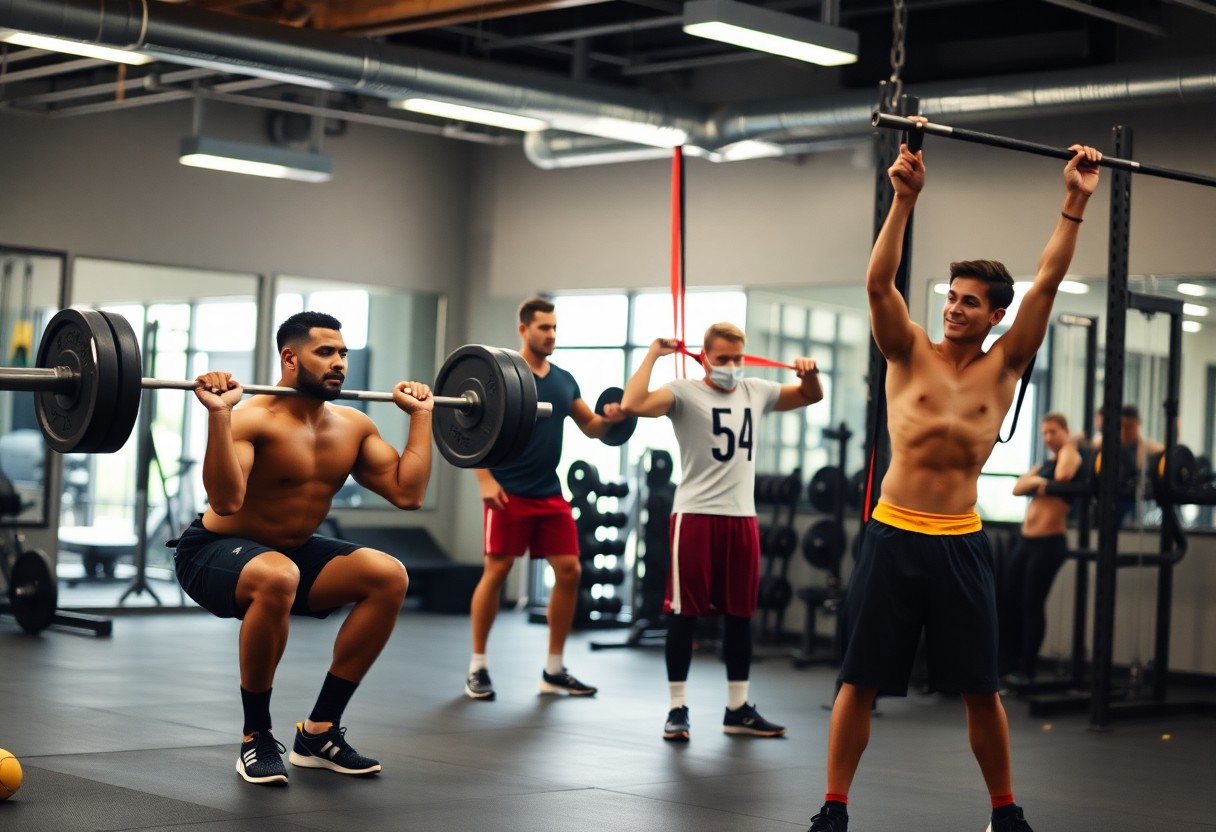
Common Mistakes in Strength Training
Not paying attention to the common mistakes in strength training can hinder your progress and increase the risk of injury. Often, athletes rush into their routines without understanding the fundamentals, leading to ineffective workouts and potential setbacks. By being aware of these pitfalls, you can maximize your strength training and enhance your overall performance.
Poor Technique
Above all, using poor technique during exercises can prevent you from achieving optimal results. Performing movements incorrectly not only diminishes the effectiveness of your workout but also places unnecessary strain on your joints and muscles. Focus on mastering the proper form before increasing weights or intensity to ensure safety and effectiveness in your training regimen.
Neglecting Recovery
Across many training programs, neglecting recovery often leads to burnout and diminished performance. Athletes frequently underestimate the importance of rest days and proper recovery protocols, which are vital for muscle repair and growth. Ignoring your body’s need for recovery can result in fatigue, decreased strength, and increased risk of injury.
In addition, incorporating adequate recovery strategies into your routine is necessary for long-term success. This includes not only taking rest days but also ensuring proper nutrition, hydration, and sleep. Engaging in activities like stretching, foam rolling, or low-intensity workouts can facilitate circulation and promote healing. By prioritizing recovery, you empower your body to rebuild and adapt, ultimately improving your strength and performance in the gym or on the field.
Summing up
With these considerations, integrating the best strength training exercises into your routine will significantly enhance your athletic performance. Focus on compound movements like squats, deadlifts, and bench presses, as they engage multiple muscle groups and improve your overall strength. Tailor your training to address your specific sport and personal goals, ensuring you prioritize both functional movement and injury prevention. By committing to a well-structured strength training regimen, you’ll not only boost your physical capabilities but also gain a competitive edge in your athletic endeavors.
FAQ
Q: What are the primary benefits of strength training for athletes?
A: Strength training offers numerous benefits for athletes, including increased muscle strength, enhanced power output, improved endurance, and better overall athletic performance. Additionally, it contributes to injury prevention by strengthening muscles, tendons, and ligaments, which can help stabilize joints during dynamic movements. Athletes can also experience improved balance and coordination, as well as enhanced metabolic efficiency, which can translate to better performance in their specific sports.
Q: What are some effective strength training exercises specifically for athletes?
A: Some of the most effective strength training exercises for athletes include squats, deadlifts, bench presses, and overhead presses. Additionally, Olympic lifts such as the clean and jerk or the snatch can be highly beneficial for developing explosive strength. Plyometric exercises, such as box jumps or medicine ball throws, can also be integrated to enhance power. Athletes should tailor their strength training regimen to their specific sport and individual goals, ensuring a balanced approach that focuses on functional strength and explosive movement patterns.
Q: How often should athletes incorporate strength training into their training routine?
A: The frequency of strength training can vary based on the athlete’s sport, season, and overall training goals. Generally, athletes should aim to include strength training sessions 2 to 4 times per week. During the off-season, athletes might focus more heavily on building strength, while in-season training could shift toward maintenance and injury prevention. It’s important for athletes to listen to their bodies and adjust their routines to avoid overtraining while ensuring they stay physically prepared for their sport.
